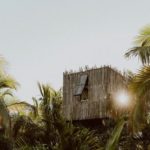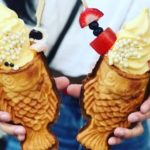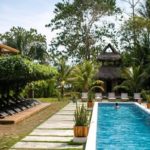Most Impressive Wildlife Photos You Have Taken
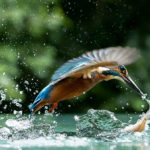
Wildlife photography for beginners is one of the most challenging but entertaining areas of photography you could ever attempt. No two images will look the same. Therefore, I wanted to share with you the most extreme and impressive wildlife photos you have taken.
These 7 images I’ve selected have been taken by photographers who train with iPhotography. iPhotography offers online training courses for aspiring photographers all over the world.
Check out this course to see how you can take your photography skills to the next level for free.
I’ll tell you how these amazing and extreme wildlife photos were taken and what makes them so impressive.
Portuguese Red Squirrel by Anne Luther-Gandy
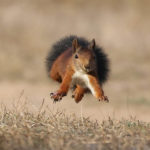
Photographing squirrels is a difficult task. They tend to be suspicious of anyone and everything, so you need to plan your shots, like Anne Luther-Gandy did carefully. What makes this wildlife photo so impressive is that the squirrel is running towards camera.
Normally instinct is to runaway from unknown threats in the wild, but how the photographer managed to coax the squirrel towards her is impressive.
By using a bit of food and patience, a fast shutter speed around 1/2000th, a shallow depth of field and object tracking focus mode, she captured this incredible and extreme moment of wildlife photography.
Field Mouse by Barbara Coulson
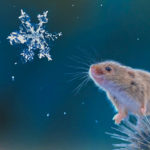
Barbara Coulson is an award-winning UK photographer capturing an incredible array of impressive wildlife photographs. One of the most extreme shots that I’ve ever seen from her is this one of a field mouse watching the falling snowflake.
While the original image has had some post-production work to add the snowflake, it’s still a wonderful wildlife moment to enjoy. Capturing the mouse delicately poised on the end of the plant takes patience, anticipation and preparedness.
Having her camera set up on a tripod and being ready with a high-speed burst mode meant she could take lots of photos really quickly without moving much.
Wildlife photography courses help beginner photographers learn the foundations of what makes an amazing animal photo. It’s vital to understand how your camera works, but it’s just as important to learn the behaviour and personality of your wildlife subjects too.
Sparrowhawk by Derek Smith
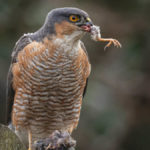
A former iPhotography Wildlife Photographer of the Year winner, Derek Smith is one of the UK’s most consistent and impressive wildlife shooters, in my opinion.
The image of the sparrowhawk devouring his meal is gory but honest. I wanted to include this image in my 7 most impressive wildlife photos because it shows that wildlife photography isn’t always pretty.
Capturing wild animals eating, fighting and hunting can look extreme, but it’s very natural. Derek has spent many years learning wildlife photography with our online photography classes, and his hard work has paid off.
The shallow depth of field which creates the blurry background makes the sparrowhawk look sharp and detailed. The colours in the background match up with the colours of the sparrowhawks’ feathers too, which create a consistent and non-distracting colour palette.
Seeking out extreme and dramatic moments in the wild is the type of photo that stands out amongst the crowd.
Fighting Foxes by Elizabeth-Ann Kwint
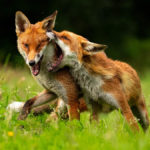
Capturing animals at play or war isn’t something that you just stumble upon as a wildlife photographer. It takes patience, repetition, and a lot of luck, but when it all comes together, you can take images as impressive as this one from Elizabeth-Ann Kwint.
Kwint took a series of images of this mother and offspring playing around and this was by far my favourite. The energy and interaction make it look like an extreme battle, but in fact, it’s a maternal moment of mum telling her cub off!
To take wildlife photos like this, you’ll need to have a fast shutter speed to avoid any blurring of movement in the animals. The dark background accentuates the colour of the Foxes’ red fur and is complemented by the green grass.
Kingfisher by Montse Bartlett
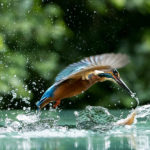
The kingfisher, along with hummingbirds, are probably the most sought-after and elusive species to capture for bird photographers. This kingfisher portrait by talented photographer Montse Bartlett is another award-winning image and a great example of the best wildlife photography I’ve ever seen.
This extreme moment of the kingfisher diving for prey not only takes a great knowledge of where the bird will land, but also having all the right camera settings ready.
Using a long telephoto lens allowed Bartlett to compress the background, making it looked blurred, and it emphasised the action in the foreground. Shot on a Canon 1DX Mk II, it demonstrates the power of high end DSLR cameras.
The camera can shoot multiple photos in a fraction of a second. This helped Bartlett capture several images of the same moment so she could choose her best afterwards.
With wildlife photography, you never know when (or if) you’ll get a second chance, so don’t miss the first!
Water Dragon by Patricia Smith
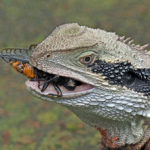
Normally, only at the zoo do you see impressive and extreme animals such as water dragons. But fortunately, for wildlife photographer Patricia Smith, this incredible creature stumbled on to her property to allow her to capture this amazing wildlife photo of a water dragon chewing on a cicada.
Shot from a slightly higher angle, this allowed Smith to capture the shape of the dragon’s head and the spines down the neck.
Being close up to your wildlife subject is not always possible due to the dangers. Animals are most suspicious when eating, as they know this is when they are distracted, and therefore vulnerable.
Taking shots like this requires courage, planning and common sense to pull off. You never know how exotic animals will react if they feel threatened.
This is not a one-off either, as I’ve seen some amazing nature and wildlife photography from Patricia Smith previously. Learning wildlife photography through classes and courses only increases your skills to capture images like this consistently.
As Patricia noted herself when taking the photo, “it’s all about being in the right place, at the right time”.
Smith favourably named the water dragon ‘Lizzy’.
Great White Pelican by Rhonda Tough
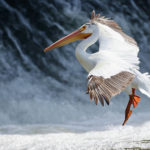
Photographing birds in flight may feel like an impossible task for beginner wildlife photographers, but it simply takes knowledge, practice, and time. Rhona Tough is one of the most impressive and dramatic wildlife photographers I’ve seen in recent years.
This image of the great white pelican is one of the most impressive wildlife photos from her portfolio. The biggest problem with photographing white birds under daylight is overexposing the feathers.
When the light goes too bright, it can be hard to see the detail on the wings. Tough has controlled this exposure perfectly. To balance all these settings while making sure the bird is fully in frame and taking the shot at the most dramatic moment isn’t done by luck. You can’t shoot moment like this on auto mode.
Years of training, taking photography classes and wildlife photography tutorials means that you’ll understand your camera perfectly. As controlling your camera settings becomes second nature, you can then concentrate on the composition—this is the art of where everything appears in the photo.
As you’ll see from all these 7 most impressive wildlife photos you’ve taken, they have blurred backgrounds with a clear sharp subject in the foreground. Simplicity is the key to wildlife photography, as Tough shows in this incredible photograph.
Most Impressive Wildlife Photos You’ve Taken: Final Words
I hope you’ve enjoyed looking at my favourite wildlife photos. It’s worth knowing that none of these photographers, as far as I know, are professionals. They are all amateurs, so what you’re seeing isn’t professional wild animal photography—but it looks like it!
It’s not their full-time job, which goes to show you that you can do this too. You don’t need to be a professional wildlife photographer to take impressive and extreme photos.
All you need is the right knowledge, confidence, and idea. You can get all that training and support with online photography classes.
Search for a free online photography course if you’re inspired by these wildlife photos to get yourself started. iPhotography has a range of amazing courses in wildlife photography for beginners. We even have a free photo course for you to try out.
You may also like

